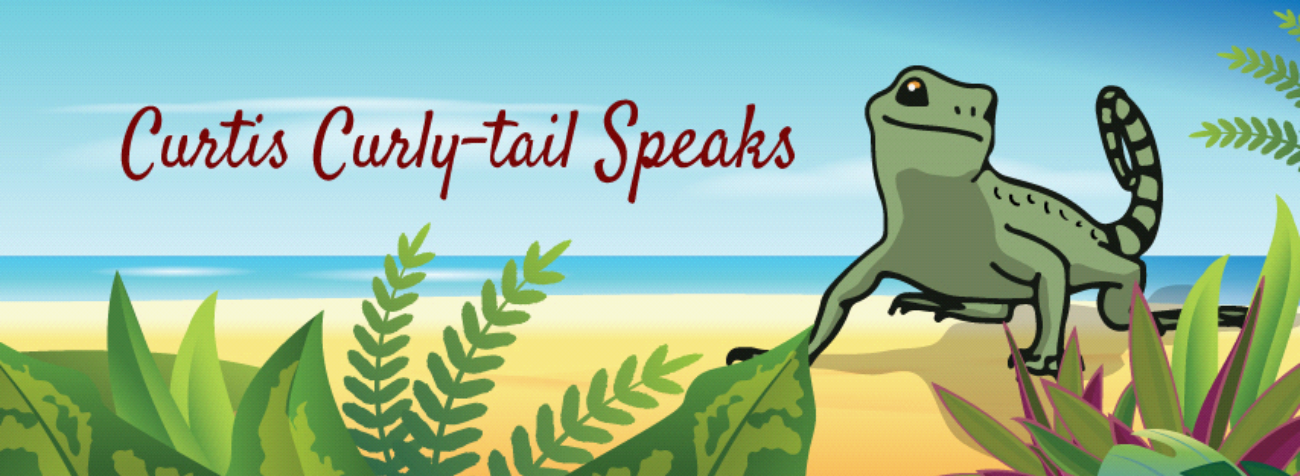A Turtle Named Scorpion
Many animals have common names. They’re much easier to remember than the more complicated scientific names. Of course, the scientific terms are more precise because areas might have different common names for the same animal. I learned this when I was preparing iguana identification booklets for different locations. The spiny-tailed iguana, Ctenasauro similis, had several common names.
An Uncommon Name (for a Turtle)
But back to this turtle. I saw this label on one of the turtle enclosures while walking around Iguanaland in Punta Gorda, FL (https://www.iguanaland.com/). The common name for Kinosternon scorpioides is Scorpion Mud Turtle. I was intrigued. Why would a mud turtle have the moniker “scorpion”?

Turtles do have tails, and male tails are generally longer than females. Except for snapping turtles, who have long tails for balance, most turtle tails are short. Consequently, it’s hard to imagine a turtle tail curling up like a scorpion’s tail does.
How can a turtle be called a scorpion? The turtle’s name seems based on a horny spine on the tip of the tail. Hmmm, and that’s why it’s called ‘scorpion.”? Really? It’s a bit of an exaggeration, in my humble opinion.
The scorpion mud turtle is also called the Tabasco mud turtle. This species is found in Mexico, Central and South America. Aquatic, this species is willing to live in almost any body of water. These turtles are omnivores, eating a variety of plants and animals. They sound like pretty easy-going, adaptable turtles. Very unscorpion-like.
Unfortunately, I didn’t get a photo of the specimen at Iguanaland. It was feeling shy or antisocial and hid under the cover of its enclosure. Or maybe it was resting up for the big Iguana Fest #3 to be held a few days later. I hope it enjoyed being admired by hundreds of visitors.
I’m still looking for a photo of this alleged scorpion tail to share. All the images I can find online have the tails tightly tucked up against the shell. The mystery continues. I also didn’t find any articles that state if the tail spine is used defensively. Even though it doesn’t look like a scorpion’s stinger, maybe it’s used to stab predators… Then, I could understand the name.
The exciting physical asset is that the plastron or underside has two hinges! I thought only box turtles had hinges on their plastrons. Mud turtles can have two hinges! Amazing. However, box turtles are still the only turtles that can completely shut their bodies up inside their shell. (If you want to read up on turtles and tortoises, I recommend my Don’t Call Me Turtle, which features box turtles).
I do find enjoyment in the unusual common name of this turtle, however a stretch it might be. A turtle called a scorpion. I learn something new every day. I wonder if any scorpions have turtle in their common name…
If you like turtles (and all of their names) as much as I do, check out my educational workbook that is all about turtles!
To learn about our latest science-based children’s books and workbooks, to read our latest blog posts about reptiles, birds, cats, and gardening, in a variety of locations, and about how the books come to be, what inspires an author to write, and many more interesting aspects of the publishing business, fill in the box below and we will add you to our email list.
Thank you!



